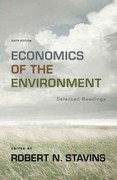14.740 HW Credit Homework Assignment This homework assignment is split over two units. Please ensure that you complete both units of the homework assignment. This homework assignment does not require you to work with data, or to work in R. Both units concern the paper Credit Elasticities in Less-Developed Economies: Implications for Microfinance by Dean Karlan and Jonathan Zinman (2008). The first unit goes through a simple model to motivate the paper's approach while the second unit looks at the empirical findings of the paper. We recommend that you read the paper before attempting this assignment; it is available for download E. The entire homework, containing both units of questions, is available for download as a pdf. Do note, however, that all answers need to be submitted on the edX platform. UNlTl For the following questions, consider a consumer who earns income y each month. She has to spend c each month on essential goods, such as food and shelter. She has no access to reliable savings, so she must spend her entire income each month. The consumer is interested in taking a loan to finance a large purchase. The cost of capital for banks is fixed at k each month and the monthly interest rate charged to borrowers is r. Both k and r are equal to one plus the interest rate as we are used to seeing it e.g., if a loan charges 5% monthly interest, then r = 1.05. 1. What is the largest nonessential purchase that the consumer can make each month without borrowing? Express it as a function of y and c. 2. Under the zero profit condition for lenders (i.e. banks), what will the interest rate r charged to borrowers be? Assume there is no risk of default and no fixed costs and express it as a function of k. Now, assume that the borrower must repay the loan in a single payment before the end of the month (i.e. before they earn more income). The borrower can only use one month's income for repayment, since they are unable to save. 3. What is the borrower's monthly disposable income (exclusive of essential purchases) with a loan, under the assumptions mentioned above? Express your answer as a function of y, c, k, and the loan amount L. 4. Would the borrower take out a one month loan under the assumptions sketched out above (i.e. the loan needs to be paid back in a single payment before the end of the month, with only one month's income used for repayment)? a. Yes b. No This study source was downloaded by 100000828617137 from CourseHero.com on 07-17-2021 14:25:04 GMT -05:00 https://Www.coursehero.conl/le/7343 8227/HW-07-Credit-Questionspdf/ c. It depends Now assume the borrower can take a two month loan. For a two month loan: ' A loan of size L is made. 0 First month interest is calculated on the total amount L using the monthly interest rate. The first repayment is subtracted from the total repayment burden (including first month interest) in the first month. - Second month interest (again using the monthly rate) is calculated on what's left of the loan and interest AFTER the first payment. - The second repayment should equal whatever is left to be repaid (including second month interest) in the second month. 5. Assume the borrower repays the same amount m in both months. Express the payment amount m in terms of L and k. 6. Under the same set up, what is the largest m that the borrower can afford to pay back each month? 7. Using your answers to questions 5 and 6, what is the largest loan L that the borrower can afford to take out under this set up? 8. Under this set up, does a loan increase disposable income for the first period? a. Yes b. No c. It depends 9. Will allowing a borrower who likes to smooth consumption to take out a longer term loan encourage or discourage borrowing for a given loan size? a. Encourage b. Discourage UN|T2 The following questions look at the empirical findings and experimental design presented in the paper Credit Elasticities in Less-Developed Economies: Implications for Microfinance by Dean Ka rlan and Jonathan Zinman (2008). We recommend that you read the paper before attempting these questions; it is available for download E. This study source was downloaded by 100000828617137 from CourseHero.com on 07-17-2021 14:25:04 GMT -05:00 https://Www.coursehero.conl/le/7343 8227/HW-07-Credit-Questionspdf/ 10. Which of the following research question(s) do Karlan and Zinman try to answer in their paper? (Check all that apply.) Whether consumption borrowing responds to changes in the interest rate Whether microcredit has an impact on women's empowerment measures Whether consumption borrowing responds to changes in the size of the loan Whether consumption borrowing responds to changes in the loan duration ape-9: 11. Which of the following do the authors find with respect to the interest rate elasticity of demand for credit? a. Borrowing is never sensitive to the interest rate charged. b. Borrowing is sensitive to the interest rate charged at all levels. c. Borrowing is sensitive to interest rates below standard rates, but not above this level. cl. Borrowing is sensitive to interest rates above standard rates, but not below this level. 12. Which of the following do the authors find with respect to the sensitivity to changes in the loan maturity of demand for credit? (Check all that apply) a. Borrowing does not respond very strongly to changing maturities. b. Borrowing responds even more strongly to changing maturities than to changes in the interest rate. c. High income borrowers respond to changes in the loan maturity, but not low income borrowers. d. Low income borrowers are especially responsive to changes in the loan maturity. 13. Would we expect the demand for business/production loans to typically more or less sensitive to the loan maturity than the demand for consumer loans? a. More b. Less This study source was downloaded by 100000828617137 from CourseHero.com on 07-17-2021 14:25:04 GMT -05:00 https://Www.coursehero.conl/le/7343 8227/HW-07-Crcdit-Questionspdf/









